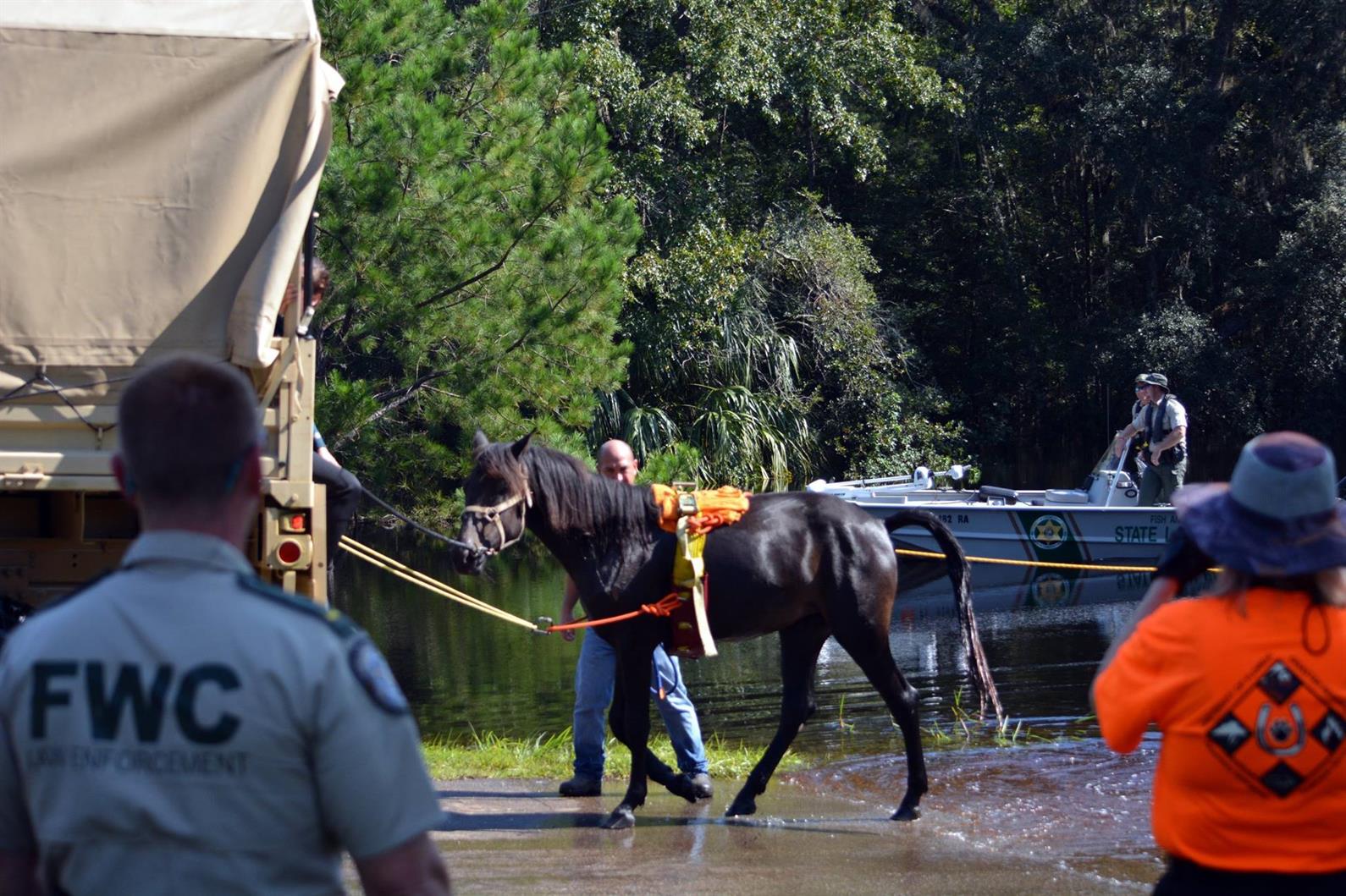Tornadoes, hurricanes, flooding, and wildfires—these natural disasters are some of horse owners’ worst nightmares, and we’ve seen them play out to devastating effect in recent years. Horsemen are powerless to control the weather, of course, but having a good disaster-preparedness plan can help horse owners and managers respond faster and more effectively if such a disaster does occur.

Photo: AdobeStock/Tomasz Zajda Photo
In the spring issue of US Equestrian, we bring together resources from Hagyard Equine Medical Institute, Markel Insurance, the American Association of Equine Practitioners, and more to help you plan. From pre-disaster checklists to emergency kit must-haves and links to additonal resources, our experts get you ready for severe weather season.
“It’s important to think about these things on a nice, quiet day ahead of time and to discuss plans with anybody involved ahead of time,” said Dr. Ernie Martinez II of Hagyard Equine Medical Institute in Lexington, Ky., where his practice includes emergency field medicine. Martinez is also certified in large-animal rescue. “That way, when a situation arises, everybody can think clearly and remember the plan that’s been set up.
“Prepare early, and take into consideration what types of disaster you might have to face, depending on your location,” Martinez advised. “Also consider what kind of horses you’ll be dealing with and the mentality and temperament of those horses, as well as any special needs they have.”
Make a Plan--and an Emergency Kit
Also important: a well maintained emergency supply kit. Markel Insurance’s online Risk Management Library, which features a variety of informational resources, suggests including
- First-aid kits for both horses and humans. For more on building your horse’s first-aid kit, visit our online Learning Center and watch Hagyard’s Dr. Liz Barrett in the video “What You Need in a Horse First-Aid Kit.” Check your supplies and any expiration dates in your kit at least once a year, Martinez advises.
- A week’s supply of hay, grain, and water in case your horse needs to be evacuated. If you can stockpile feed and water, use water-tight containers, and keep in mind how much each horse will need, Hagyard’s Martinez said. “Each horse needs about 12 to 24 gallons of water per day,” he said. “That’s a lot of water. Fill up all your water troughs and line trash cans with trash bags and fill them up. It’s also good to know that you can disinfect rain water with two drops of chlorine bleach per quart of water, then letting it sit for 30 minutes.”
- Extra buckets, ropes, and halters
- Flashlights
- A screwdriver
- A battery-powered radio
- Basic farrier tools
- An emergency contact list, including local authorities and potential evacuation sites in neighboring counties in case you need to evacuate your horse there.
- Medications and important documents, such as a signed permission statement for emergency treatment for each horse, your veterinarian’s contact information, employee contact information, and microchip numbers for each animal.
- Up-to-date photos (digital and paper) of the horse. Ideally, use a photo that shows horse and owner together, which helps establish ownership during the reclaiming process.
Don’t forget to consider key records or equipment that might also need evacuating in a disaster, like veterinary

Photo: Courtesy of the AAEP
records or computers. Keep these organized and in a place where they can be packed quickly. And if you have time to do so, ask your veterinarian to arrange for an extra week’s worth of medication for your horses. “Even something as simple as keeping a copy of your prescriptions from your veterinarian can help you get those medications quickly and easily if you need to evacuate,” Martinez said.
If you have warning that a disaster could occur—such as flood watches or severe weather watches—one good step to take is to identify your horse. Whether your horse is staying in place or evacuating (and even if they are microchipped) give them an extra form of ID. If your horse is evacuating, use a halter tag with emergency information, including your name and contact details, plus insurance information. Markel advises against haltering horses sheltering in place out of concern that their halters could become tangled in debris and cause injury or death. There are other ways to ID your horse without a halter. Use latex spray paint or clippers to write your phone number on your horse’s back. Or use a permanent marker to write your contact details on two lightweight, waterproof luggage tags and braid them into your horse’s mane and tail.
For more disaster-preparedness tips, including what to do before a storm and a list of useful items for rescue volunteers to keep on hand, check out US Equestrian magazine.
Want articles like this delivered to your inbox every week? Sign up to receive the Equestrian Weekly newsletter here.
This article is original content produced by US Equestrian and may only be shared via social media. It is not to be repurposed or used on any other website than USequestrian.org.

